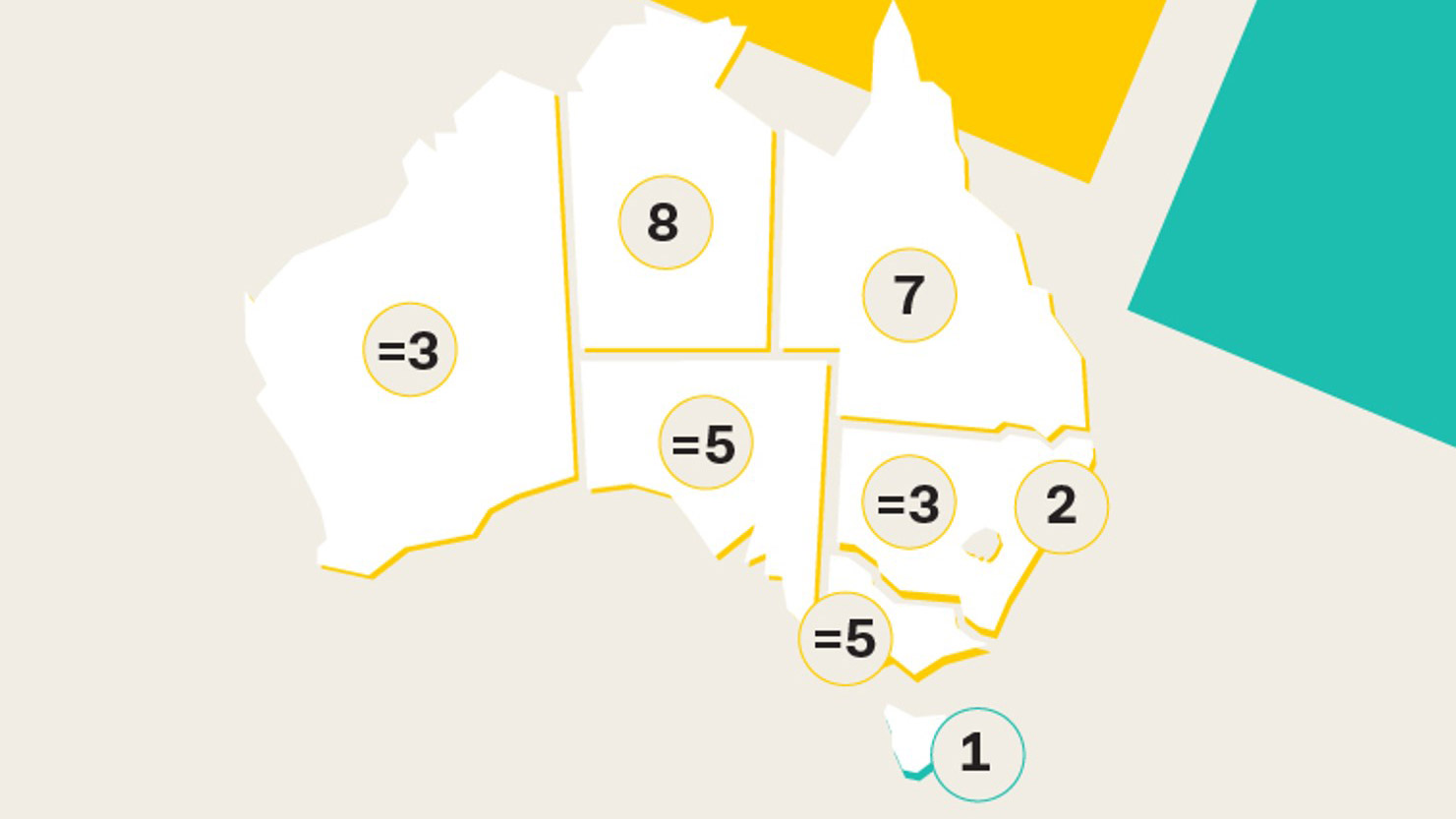CommSec Chief Economist, Craig James, said: “Overall, Australia’s state and territory economies are in strong shape, well supported by significant fiscal and monetary stimulus. Unemployment rates are historically-low across much of the nation – remarkable when you consider the COVID-19 challenges and when the broader Australian economy was in recession just over a year ago.
“Tasmania remains in top position in the economic performance rankings. Tasmania leads the nation on four of the eight indicators assessed. As we noted last quarter, Tasmania is unlikely to face any challenge to its dominance on the key economic indicators until mid-2022 at the earliest.
“Identifying the economy to challenge Tasmania for top position is not easy. Much will depend on vaccination rates, and reopening of state and foreign borders. But stimulus applied by state and territory governments will be important.”
“Queensland would be a key beneficiary of the opening of borders with inter-state and overseas tourism driving spending and employment. Queensland and Northern Territory will be supported by population growth and higher commodity prices.”
The State of the States report uses the most recent economic data available, however while some data relates to the June quarter, other data – such as unemployment – is timelier, covering the month of September.
State and territory highlights
- NSW is ranked first on housing finance and third on dwelling starts.
- Victoria ranks second on housing finance and third on construction work done.
- Queensland is ranked third on relative population growth, relative unemployment and retail trade.
- South Australia ranks second on both dwelling starts and construction work done.
- Western Australia ranks first on relative economic growth and is second-ranked on relative unemployment.
- Tasmania is ranked first on construction, retail spending, relative unemployment and dwelling starts. Tasmania also ranks second on equipment investment, relative economic growth and relative population growth.
- The ACT is top ranked on equipment investment and second on retail trade.
- The Northern Territory is second ranked on relative population growth and has the fastest annual growth for three of the indicators.
Annual growth rates
- Annual changes in economic indicators are useful for measuring economic momentum.
- On the eight economic indicators assessed, Western Australia tops the annual changes on three measures; Northern Territory leads on two (and second on two indicators); while NSW and Queensland lead on one each.
- When looking across growth rates for the states and territories Tasmania, Northern Territory and NSW have annual growth rates exceeding the national average on six of the eight indicators.
- Western Australia and South Australia lead the national average on five measures ahead of the ACT on four; Victoria on three and Queensland on two.
About the CommSec State of the States Report
CommSec, the digital broking arm of Australia’s largest bank, assesses the performance of each state and territory on a quarterly basis using eight key indicators. Those indicators include: economic growth, retail spending, equipment investment, unemployment, construction work done, population growth, housing finance, and dwelling commencements.
Just as the Reserve Bank uses long-term averages to determine the level of "normal" interest rates, CommSec compares the key indicators to decade averages; that is, against "normal" performance. CommSec also compares annual growth rates for eight key indicators for all states and territories, in addition to Australia as a whole, enabling a comparison of economic momentum.

